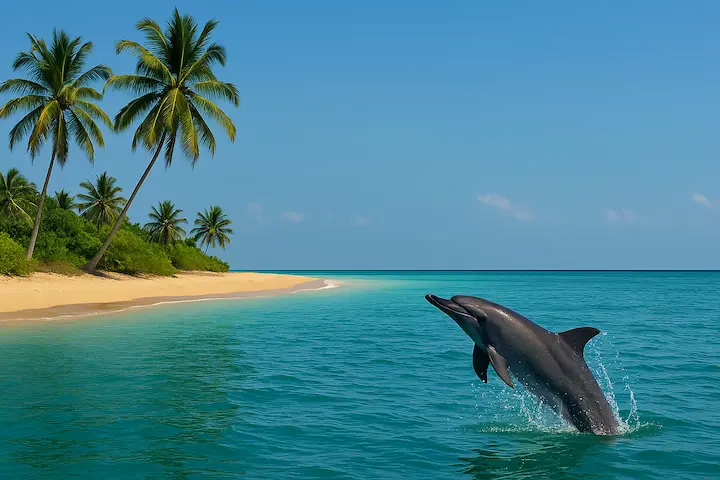TL;DR: Sri Lankan Food
Sri Lankan food costs vary dramatically from budget street food (LKR 100–400) to fine dining (LKR 3,000–8,000). Local eateries in Colombo cost 2–3x more than rural areas, while tourist zones can be 4–5x pricier. Street food and local “hotels” offer authentic experiences for under LKR 800, while upscale restaurants provide refined Sri Lankan cuisine for LKR 2,000–5,000 per meal. Regional differences are significant: Colombo is most expensive, Kandy moderate, and Galle varies by location and proximity to tourist areas.
Sri Lanka’s Culinary Landscape
Sri Lanka’s culinary landscape offers an extraordinary journey from humble street-side vendors to world-class fine dining establishments, each serving up the island’s rich Sri Lankan food heritage in unique ways. Understanding the cost structure of dining across this tropical paradise is essential for travelers seeking to balance authentic experiences with budget considerations. Whether you’re craving a simple plate of rice and curry from a local “hotel” or yearning for a sophisticated interpretation of traditional flavors at an upscale restaurant, Sri Lanka’s diverse food scene caters to every palate and pocket.
The island’s food culture reflects its complex history, with influences from Indian, Arabic, Portuguese, Dutch, and British cuisines creating a distinctive culinary identity. From the bustling streets of Colombo to the ancient temples of Kandy and the colonial charm of Galle, each region offers its own interpretation of classic dishes, often at vastly different price points.
Local Restaurant Prices vs. Tourist Area Premiums
The disparity between local and tourist-oriented dining establishments in Sri Lanka can be staggering, often representing the difference between an authentic cultural experience and a sanitized version designed for foreign palates. Local “hotels” – small family-run restaurants that form the backbone of Sri Lankan food culture – typically charge between LKR 300–1,200 for a complete rice and curry meal, depending on the location and variety of dishes offered.
In contrast, restaurants in tourist areas can charge 300–500% more for similar dishes. A traditional rice and curry that costs LKR 400 in a local establishment might command LKR 1,500–2,000 in a beachfront restaurant in Unawatuna or a hotel restaurant in Kandy’s tourist district. This premium often comes with air conditioning, English menus, and presentation styles familiar to international visitors, but the authentic flavors and cooking methods remain largely unchanged.
Tourist areas also tend to offer fusion interpretations of Sri Lankan food, blending local spices and techniques with international cuisines. While these establishments provide comfort for nervous first-time visitors, they often lack the depth of flavor and cultural authenticity found in local eateries. The markup isn’t just about location – it includes costs for imported ingredients, higher rent, English-speaking staff, and marketing to tour operators.
Street food represents the most affordable end of the spectrum, with items like hoppers (appa), kottu roti, and short eats available for LKR 100–400 per serving. These vendors, found throughout the island, offer the most authentic taste of Sri Lankan food culture, often using recipes passed down through generations.
Regional Food Cost Analysis: Colombo vs. Galle vs. Kandy
Colombo: The Urban Premium
As Sri Lanka’s commercial capital, Colombo commands the highest food prices across all categories. The city’s Sri Lankan authentic food scene ranges from street vendors in Pettah market charging LKR 150–300 for a plate of hoppers to luxury restaurants in Colombo 7 where a tasting menu can exceed LKR 8,000 per person.
Mid-range restaurants in Colombo typically charge LKR 800–2,500 for main courses, with traditional rice and curry meals averaging LKR 1,200–1,800. The city’s diverse dining scene includes everything from hole-in-the-wall eateries serving authentic Sri Lankan food to international chains and high-end establishments offering refined local cuisine.
Colombo’s street food scene thrives in areas like Galle Face Green, where evening vendors sell isso wade (prawn fritters), pani puri, and fresh fruit for LKR 100–400 per item. However, even street food costs 20–30% more than in other cities due to higher operating costs and increased demand.
Kandy: Cultural Capital Pricing
Kandy strikes a balance between authenticity and accessibility, with food prices generally 20–40% lower than Colombo. The city’s Sri Lankan food menu offerings reflect its cultural significance, with many restaurants specializing in traditional Kandyan cuisine featuring unique preparations and spice blends.
Local restaurants in Kandy charge LKR 500–1,200 for rice and curry meals, while tourist-oriented establishments near the Temple of the Tooth or Kandy Lake can charge LKR 1,500–3,000 for the same dishes. The city’s street food scene is vibrant and affordable, with vendors around the central market offering authentic snacks for LKR 100–300.
Kandy’s unique position as both a cultural center and tourist destination creates interesting pricing dynamics. Restaurants frequented by locals maintain reasonable prices, while those targeting day-trippers from Colombo or international visitors adjust their pricing accordingly.
Galle: Coastal Contrasts
Galle presents perhaps the most dramatic price variations in Sri Lanka, with costs heavily dependent on proximity to the Dutch Fort and tourist beaches. Within the fort walls, restaurants can charge premium prices – LKR 2,000–4,000 for main courses – while local eateries just outside the walls serve similar Sri Lankan authentic food for LKR 400–800.
The coastal location influences both ingredients and pricing, with fresh seafood commanding premium prices but offering exceptional quality. A fish curry that might cost LKR 600 in Kandy could cost LKR 1,200–2,000 in Galle Fort, though the oceanfront dining experience and superior seafood quality often justify the expense.
Local “hotels” throughout Galle district maintain reasonable pricing, typically charging LKR 300–800 for complete meals, making it possible to eat authentically and affordably even in this tourist-heavy region.
Budget Eating Strategies for Smart Travelers
Experiencing authentic Sri Lankan food doesn’t require breaking the bank. Smart travelers can enjoy incredible meals for under LKR 800 by following local dining patterns and seeking out authentic establishments.
The key is identifying genuine local “hotels” – look for places packed with Sri Lankan customers, handwritten Sinhala or Tamil signs, and no-frills interiors. These establishments often serve the most authentic Sri Lankan food at the lowest prices. Don’t be deterred by basic decor; some of the island’s best meals come from the humblest kitchens.
Timing meals strategically can also reduce costs. Many restaurants offer lunch packets (rice and curry wrapped in paper or banana leaves) for LKR 300–500, providing filling, authentic meals perfect for travelers on the move. These packets typically include rice, three curries, pickle, and papadum.
Street food markets offer exceptional value and authentic experiences. Pettah Market in Colombo, Kandy’s central market, and Galle’s fish market all feature vendors selling traditional snacks and meals at local prices. Early morning and late afternoon are optimal times, when vendors offer the freshest selections.
Consider staying in guesthouses or homestays where traditional Sri Lankan breakfasts are included. These typically feature string hoppers, coconut sambol, dhal curry, and fresh fruit – a substantial meal that can fuel a full morning of exploration.
Strategic Splurge vs. Save Dining Recommendations
When to Save
Reserve budget dining for lunch and casual meals when the focus is fuel rather than experience. Local “hotels” excel at providing satisfying, authentic Sri Lankan food that showcases traditional cooking methods and flavor profiles. These meals often prove more memorable than expensive tourist restaurant experiences.
Street food should always be a budget choice – the authentic flavors and cultural immersion far exceed the minimal cost. Items like hoppers, kottu roti, and short eats from street vendors often surpass restaurant versions in both taste and authenticity.
Regional specialties in their home locations offer the best value. Crab curry in Negombo, hill country vegetables in Nuwara Eliya, and Jaffna cuisine in the Northern Province all cost significantly less in their regions of origin while offering superior quality and authenticity.
When to Splurge
Reserve splurge dining for unique experiences that can’t be replicated elsewhere. High-end restaurants offering refined interpretations of Sri Lankan food provide opportunities to experience familiar flavors through sophisticated techniques and presentations.
Seafood restaurants in coastal areas justify premium pricing with exceptional freshness and preparation methods. The difference in quality between budget and premium seafood is dramatic and worth the investment for special occasions.
Hotels and restaurants offering traditional cooking classes or cultural dining experiences provide value beyond the meal itself. These educational components make higher prices worthwhile for travelers seeking deeper cultural understanding.
Rooftop restaurants and establishments with exceptional views offer ambiance that enhances the dining experience. While the Sri Lankan food menu might be similar to local alternatives, the setting creates memorable moments worth the premium.
Conclusion: Sri Lankan Food
Navigating Sri Lanka’s diverse Sri Lankan food landscape requires understanding the significant price variations between local and tourist establishments, regional differences, and the value proposition of different dining categories. From LKR 100 street snacks to LKR 8,000 tasting menus, the island offers authentic culinary experiences across every budget level.
The key to successful food tourism in Sri Lanka lies in strategic choices, embracing local “hotels” and street food for authentic, affordable meals while selectively choosing upscale establishments for special experiences. Regional price differences mean travelers can enjoy the same high-quality Sri Lankan food at varying costs depending on location and establishment type.
Ultimately, Sri Lanka’s culinary paradise rewards adventurous eaters willing to venture beyond tourist-oriented restaurants. The island’s most memorable meals often come from its humblest kitchens, where generations of tradition create flavors that no amount of money can replicate artificially. Whether spending LKR 300 or LKR 3,000, the key is seeking authenticity and embracing the rich cultural heritage that makes Sri Lankan food a true ticket to paradise.
Primary keyword: sri lankan food
Secondary keywords: sri lankan authentic food, sri lankan food menu
Meta Description (154 characters): Discover Sri Lankan food costs from street vendors (LKR 50) to fine dining (LKR 8,000). Compare prices in Colombo, Kandy & Galle plus budget eating tips.




